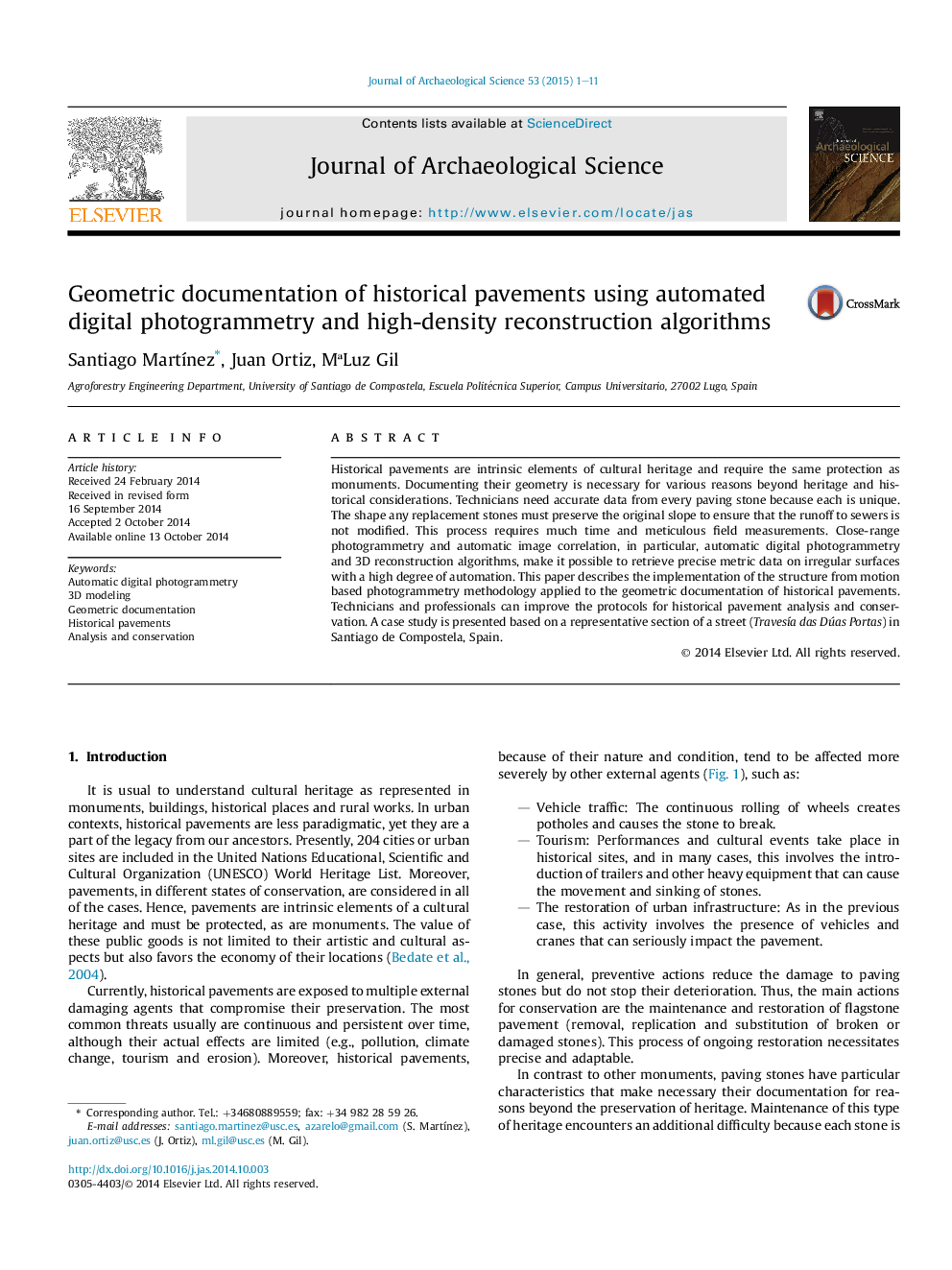| Article ID | Journal | Published Year | Pages | File Type |
|---|---|---|---|---|
| 7442434 | Journal of Archaeological Science | 2015 | 11 Pages |
Abstract
Historical pavements are intrinsic elements of cultural heritage and require the same protection as monuments. Documenting their geometry is necessary for various reasons beyond heritage and historical considerations. Technicians need accurate data from every paving stone because each is unique. The shape any replacement stones must preserve the original slope to ensure that the runoff to sewers is not modified. This process requires much time and meticulous field measurements. Close-range photogrammetry and automatic image correlation, in particular, automatic digital photogrammetry and 3D reconstruction algorithms, make it possible to retrieve precise metric data on irregular surfaces with a high degree of automation. This paper describes the implementation of the structure from motion based photogrammetry methodology applied to the geometric documentation of historical pavements. Technicians and professionals can improve the protocols for historical pavement analysis and conservation. A case study is presented based on a representative section of a street (TravesÃa das Dúas Portas) in Santiago de Compostela, Spain.
Keywords
Related Topics
Physical Sciences and Engineering
Materials Science
Materials Science (General)
Authors
Santiago MartÃnez, Juan Ortiz, MªLuz Gil,
